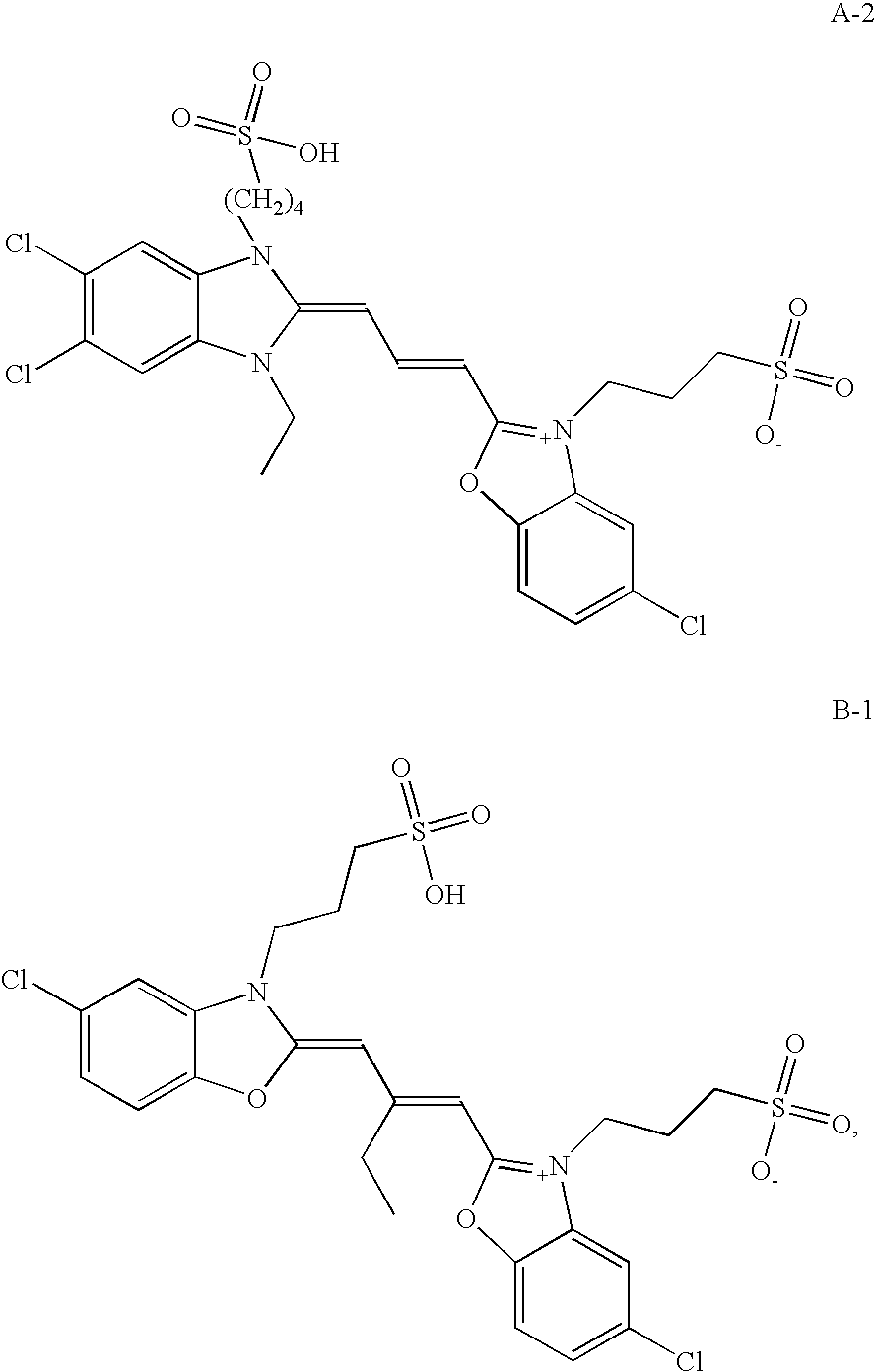Mammography imaging method using high peak voltage and rhodium or tungsten anodes
a high-pitch, tungsten-based technology, applied in the field of radiography, can solve the problems of low peak voltage, contribute to image loss, and difficult task of mammography in medical radiography, and achieve the effect of rapid processing
- Summary
- Abstract
- Description
- Claims
- Application Information
AI Technical Summary
Benefits of technology
Problems solved by technology
Method used
Image
Examples
example
[0138]Radiographic Film A:
[0139]Radiographic Film A was a single-coated film having the a silver halide emulsion on one side of a blue-tinted 170 μm transparent poly(ethylene terephthalate) film support and a pelloid layer on the opposite side. The emulsion was chemically sensitized with sulfur and gold and spectrally sensitized with the following dye A-1:
[0140]Radiographic Film A had the following layer arrangement:
[0141]Overcoat
[0142]Interlayer
[0143]Emulsion Layer
[0144]Support
[0145]Pelloid Layer
[0146]Overcoat
[0147]The noted layers were prepared from the following formulations.
[0148]
Coverage (mg / dm2)Overcoat FormulationGelatin vehicle4.4Methyl methacrylate matte beads0.35Carboxymethyl casein0.73Colloidal silica (LUDOX AM)1.1Polyacrylamide0.85Chrome alum0.032Resorcinol0.073Dow Corning Silicone0.153TRITON X-200 surfactant (Union Carbide)0.26LODYNE S-100 surfactant0.0097(Ciba Specialty Chem.)Interlayer FormulationGelatin vehicle4.4Emulsion Layer FormulationCubic grain emulsion51.1[Ag...
PUM
 Login to View More
Login to View More Abstract
Description
Claims
Application Information
 Login to View More
Login to View More - R&D
- Intellectual Property
- Life Sciences
- Materials
- Tech Scout
- Unparalleled Data Quality
- Higher Quality Content
- 60% Fewer Hallucinations
Browse by: Latest US Patents, China's latest patents, Technical Efficacy Thesaurus, Application Domain, Technology Topic, Popular Technical Reports.
© 2025 PatSnap. All rights reserved.Legal|Privacy policy|Modern Slavery Act Transparency Statement|Sitemap|About US| Contact US: help@patsnap.com



